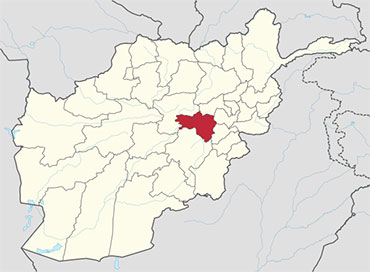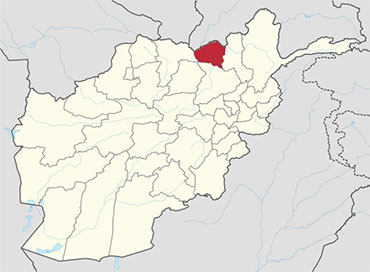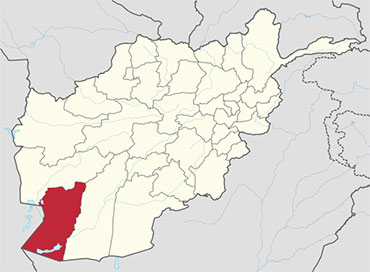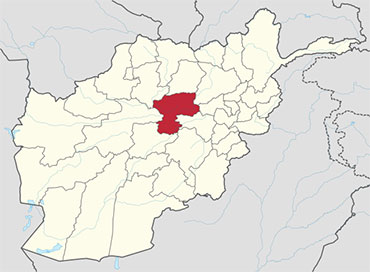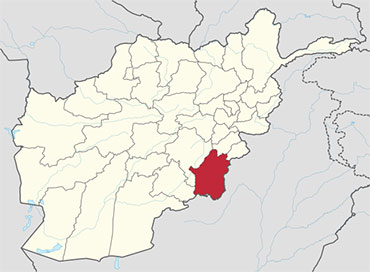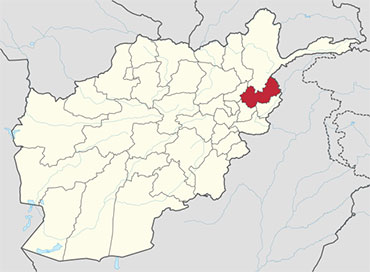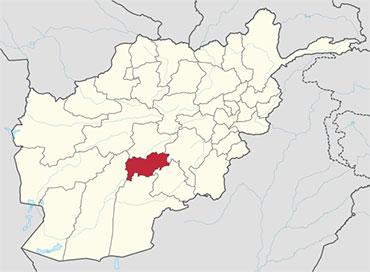 Urōzgān also spelled as Uruzgan, Oruzgan, Orozgan, or Rozgan, is one of the thirty-four provinces of Afghanistan. Urozgan is in the center of the country, although the area is culturally and tribally linked to Kandahar Province in the south. The population is 333,500, and the province is mostly a tribal society. Tarinkot serves as the capital of the province.
Urōzgān also spelled as Uruzgan, Oruzgan, Orozgan, or Rozgan, is one of the thirty-four provinces of Afghanistan. Urozgan is in the center of the country, although the area is culturally and tribally linked to Kandahar Province in the south. The population is 333,500, and the province is mostly a tribal society. Tarinkot serves as the capital of the province.
In 2004, the new Daykundi province was carved out of an area in the north, leaving Urozgan with a majority Pashtun population and Daykundi with a majority of Hazaras (see map in infobox for the provincial boundaries that resulted). In 2006, however, Gizab District was taken back from Daykundi and re-annexed to Urozgan, becoming the province’s sixth district.
History
The region was part of ancient Arachosia, and was ruled by the Medes before it fell to the Achaemenids. In 330 BC, Alexander the Great occupied the area but left it to Seleucids to rule. It was given to Mauryas later and ruled under Ashoka. By the 7th century, when the Arabs first arrived, it was under the control of the Zunbils before being conquered in the name of Islam by the Saffarids in the 9th century. It fell to the Ghaznavids followed by the Ghurids before the Mongol invasion in the 13th century. The area was ruled by Arghun Khan of Ilkhanate, later by the Timurids, Mughals and Saffavids.
In 1709, the Hotaki dynasty rose to power in Kandahar and defeated the Safavids. Then, he took control of entire southern Afghanistan while most of the Durrani Pashtuns were settled in the Herat area at the time. In 1747, one of Nader Shah’s commanders, Ahmad Shah Durrani, became leader of the Afghans and the region of Urozgan was one of the first to become part of his new Durrani Empire, which became to what is now the modern state of Afghanistan.
During the 1980s Soviet war in Afghanistan, Urozgan witnessed fighting between pro-Soviet forces and the Mujahideen. One of the most prominent local Mujahideen leaders was Jan Mohammad Khan. In late 1994, Urozgan was captured by the Taliban. They were toppled by US-led forces in late 2001. Hamid Karzai and his followers arrived to Urozgan between October and November 2001 to take over control of the area.
Healthcare
The percentage of households with clean drinking water increased from 8% in 2005 to 27% in 2011. The percentage of births attended to by a skilled birth attendant increased from 6% in 2005 to 14% in 2011.
Demographics
The population of Urozgan is reported to be around 333,500. The province has an estimated 45,000 households, each with about six members on average. A large portion of Urozgan’s settled population is from ethnic Pashtun tribes such as Popalzai, Achakzai, Nurzai, Barakzai, Alikozai, and other Durrani sub-tribes.[13] The second largest ethnic group is the Hazara which is mainly found in Tarinkot.] There is also a population of Kuchis (nomads), whose numbers vary with the seasons.
Population figures are from the Ministry of Rural Rehabilitation and Development, the Central Statistics Office Afghanistan, and the Liaison Office study 2009.
Districts
Urozgan province is divided in to 6 districts.
| District | Population | Area |
|---|---|---|
| Baharak | 40,902 | 231 km2 |
| Bangi | 28,197 | 566 km2 |
| Chah Ab | 64,151 | 764 km2 |
| Chal | 24,596 | 330.8 km2 |
| Darqad | 25,771 | 393 km2 |
| Dashti Qala | 35,347 | 280 km2 |
| Farkhar | 79,864 | 1,214 km2 |
